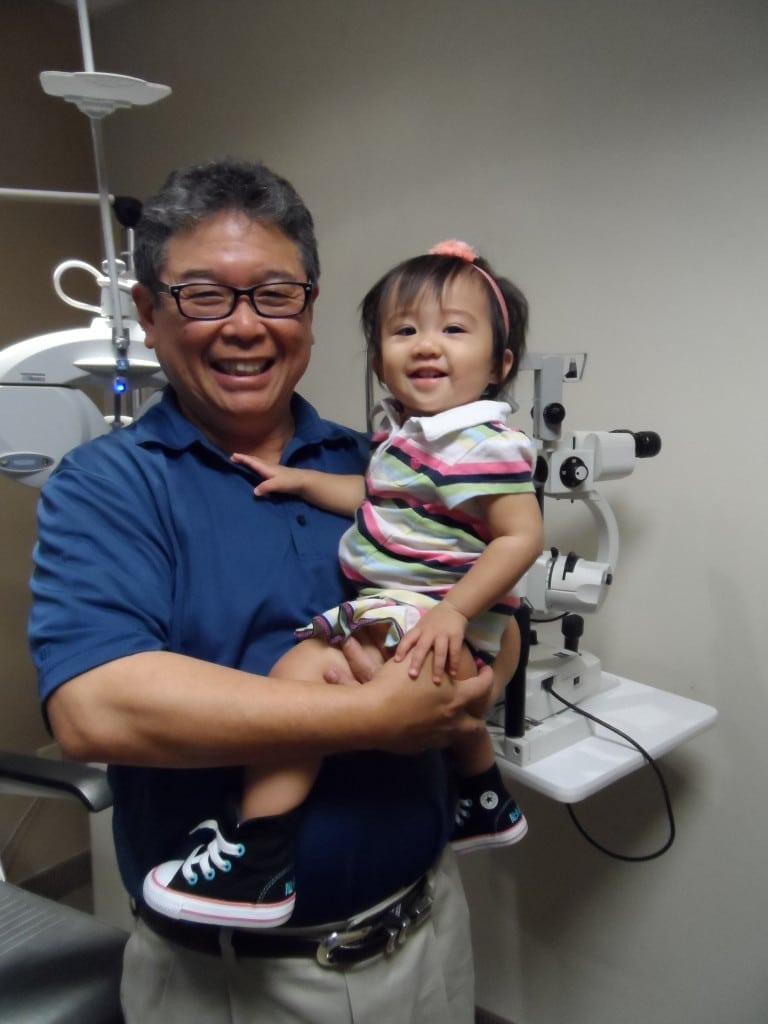
Donald M. Matsumoto, O.D., participates in the InfantSee program, offering free eye and vision assessments for children 6 to 12 months old.
“Ten fingers, ten toes,” are often the words you hear from the delivery room nurse, telling you there are no serious problems with your baby’s health. Whew! The baby’s crying. The lungs are fine. The nurses go on with their routine physical evaluation, making sure your baby has made it through the birth process in excellent shape.
Once your new family is back home, you start to track your baby’s milestones – but when should you get your baby’s eyes checked? What kind of doctor is qualified to check your baby’s eyes, and what will he be looking for?
Believe it or not, your baby should have his or her first eye examination is at 6 months of age. Research has shown that your baby is capable of 20/20 vision by age 6 months, and coordination between the two eyes is well developed. In fact, a significant amount of eye and brain visual development should have occurred by this age.
How do you find a doctor who can perform the tests needed to make sure your baby’s vision is developing as it should? Since 2005, the American Optometric Association (AOA), through its Optometry Cares Foundation, has offered the InfantSEE program, where volunteer optometrists provide a one-time, no-cost comprehensive eye and vision assessment for infants ages 6 to 12 months, regardless of the parents’ income or insurance status.
The program has identified nearly one in 10 children with an eye problem. InfantSEE was built on the AOA’s emphasis that healthy vision and early detection of eye conditions is paramount to a child’s successful development and quality of life. This philosophy led to the successful inclusion of the pediatric essential benefit in the Affordable Care Act, requiring health insurance plans to include a yearly comprehensive eye exam for all children through at least age 18 in their coverage.
Optometrists and ophthalmologists are the pediatric vision experts. Vision screening provided by pediatricians is really more of a distance-vision screening. Pediatricians do not have the proper equipment to perform a comprehensive eye exam. Things an optometrist or ophthalmologist can detect that pediatricians might miss include examining the visual skills for reading and learning. These are much more complex as children grow.
Also, examination of the internal eye (the retina) requires dilation. The eye doctor is looking for normal anatomy and an orange-reddish reflection from the retina.
To find out where you can get your baby’s eyes evaluated today, check out www.infantsee.org.
Donald M. Matsumoto, O.D., F.A.A.O., practices with Pacific EyeCare Optometry in Los Angeles. Visit them online at www.visionsource-pacificeyecare.com.


























